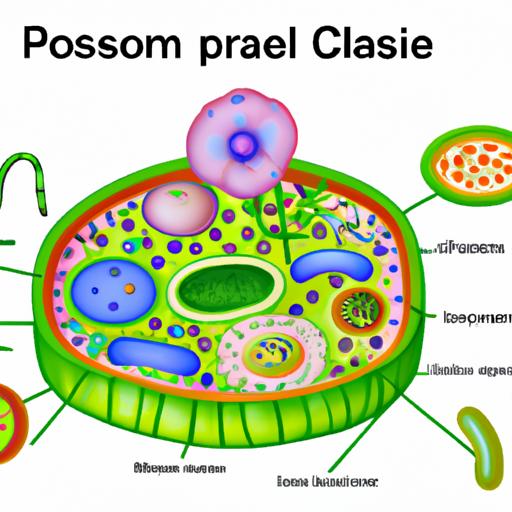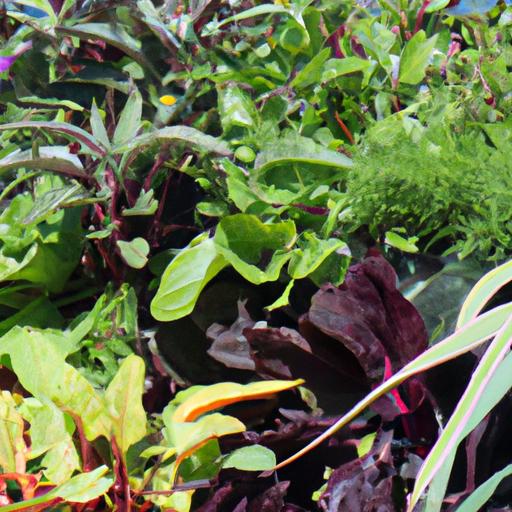Do Plants Have DNA?

We are all familiar with the concept of DNA, the building blocks of life that hold the key to our genetic makeup. But have you ever wondered if plants also possess this remarkable molecule? In this article, we will explore the intriguing question: do plants have dna? Join me on this journey as we delve into the world of botany and unravel the mysteries of plant genetics.
A. Unveiling the Significance of DNA
DNA, or deoxyribonucleic acid, is a fundamental component found in every living organism. It serves as a blueprint that carries genetic information, determining our physical traits and characteristics. From the color of our eyes to our predisposition to certain diseases, DNA plays a pivotal role in shaping who we are. This genetic material not only influences individual organisms but also contributes to the diversity and evolution of entire species.
B. Exploring the Enigma of Plant DNA
Now, let’s turn our attention to the captivating realm of plants. Do they possess DNA? The answer is a resounding yes! Just like animals and humans, plants also rely on DNA as their genetic material. However, the structure and characteristics of plant DNA may differ from those of other organisms, showcasing the fascinating diversity of life on our planet.
C. The Importance of Understanding Plant DNA
Understanding plant DNA is crucial for scientific research and advancements in various fields. By unraveling the mysteries of plant genetics, researchers can gain insights into how plants adapt to different environments, resist diseases, and even enhance crop yields. Moreover, studying plant DNA paves the way for advancements in agriculture, pharmaceuticals, and ecological conservation. The more we comprehend about plant DNA, the better equipped we become to harness its potential for the betterment of humankind.
In the next section, we will delve deeper into the concept of genetic material in plants and explore the different types of genetic material they possess. Join me as we uncover the intricacies of plant genetics and marvel at the wonders of nature’s blueprint.
Understanding DNA
A. DNA Structure: The Blueprint of Life
At the core of every living organism lies the intricate structure of DNA. This remarkable molecule is composed of two strands twisted together in a double helix formation. Each strand consists of nucleotides, which are made up of a sugar molecule, a phosphate group, and one of four nitrogenous bases: adenine (A), thymine (T), cytosine (C), or guanine (G). The sequence of these bases along the DNA strand holds the key to an organism’s genetic information.
This genetic information is encoded in the sequence of nucleotides, forming genes that determine the traits and characteristics of an organism. DNA acts as a vast library, storing the instructions necessary for the growth, development, and functioning of every living being. Through a complex process, this genetic information is transcribed into RNA, which then guides the synthesis of proteins – the building blocks of life.
B. DNA in Animals and Humans: A Universal Code
DNA is not exclusive to plants; it is a universal code found in all living organisms. Animals and humans, like plants, rely on DNA to pass on genetic traits from one generation to the next. Every cell within our bodies contains DNA, carrying the genetic instructions that make us who we are. From our eye color to our susceptibility to diseases, DNA plays a vital role in shaping our physical and biological makeup.
C. Exploring DNA in Plants: A Fascinating Frontier
While we know that DNA is present in animals and humans, the question of its presence in plants often sparks curiosity. As we delve into the realm of plant genetics, it becomes evident that plants, too, possess DNA. However, the structure and characteristics of plant DNA may differ from those of animals and humans. Exploring the unique aspects of plant DNA is essential to gaining a comprehensive understanding of the genetic intricacies that govern plant life.
In the following section, we will unravel the genetic material found in plants and shed light on the various types of genetic material they possess. Join me as we embark on a journey into the fascinating world of plant genetics and unravel the mysteries of their DNA.
The Genetic Material in Plants
Plants, much like animals and humans, possess a complex array of genetic material that governs their growth, development, and adaptation. Let’s take a closer look at the genetic material found in plants and understand its significance in their biological processes.
A. Overview of the Genetic Material in Plants
Plants harbor a variety of genetic material within their cells, which orchestrates their intricate biological functions. The primary form of genetic material in plants is DNA, short for deoxyribonucleic acid. DNA is present in the nucleus of plant cells and serves as the repository of genetic information that determines an organism’s traits. This genetic material carries the instructions necessary for plant growth, reproduction, and response to environmental stimul
In addition to DNA, plants also possess another type of genetic material known as RNA, or ribonucleic acid. RNA plays a vital role in the synthesis of proteins, acting as a messenger that carries genetic information from DNA to the cellular machinery responsible for protein production. The interplay between DNA and RNA is crucial for ensuring the proper functioning of plant cells and their ability to carry out essential processes.
B. Different Types of Genetic Material in Plants
Within the realm of genetic material, plants exhibit a diverse range of components. Apart from DNA and RNA, plants also have specialized structures called chromosomes. Chromosomes are thread-like structures composed of DNA and proteins, which package and organize the genetic material within the nucleus of plant cells. These chromosomes contain the genes that determine specific traits, such as flower color, leaf shape, and height.
C. The Role of DNA in Transmitting Genetic Traits in Plants
DNA takes center stage in the transmission of genetic traits in plants. Through a process called DNA replication, genetic information is faithfully copied and passed on to subsequent generations of plants. This replication ensures that offspring inherit the genetic material necessary for growth and development. Additionally, DNA undergoes genetic recombination, a process that shuffles and combines genetic information from two parent plants, leading to genetic diversity and the potential for adaptation to changing environments.
In the upcoming section, we will unravel the fascinating structure of plant DNA and delve into its unique characteristics. Join me as we explore the molecular blueprint that shapes the marvelous world of plants.
Plant DNA Structure
A. Detailed Description of Plant DNA Structure
When it comes to plant DNA structure, we find a remarkable complexity that is both intriguing and distinctive. The structure of plant DNA is similar to the double helix structure found in animals and humans. It consists of two strands that intertwine, forming a twisted ladder-like shape. Each strand is composed of nucleotides, which are the building blocks of DNA.
Within these nucleotides, we find four different bases: adenine (A), thymine (T), cytosine (C), and guanine (G). These bases pair up in a specific manner, with adenine always bonding with thymine and cytosine always bonding with guanine. This base pairing is what allows DNA to replicate and transmit genetic information accurately.
B. Comparison of Plant DNA Structure with Animals and Humans
While the overall structure of plant DNA is similar to that of animals and humans, there are certain variations that set plant DNA apart. One notable difference is the size of plant genomes. Plant DNA tends to have larger genomes compared to animals, which can result in a more complex genetic makeup and a wider range of traits.
Another distinction lies in the presence of chloroplast DNA in plants. Chloroplasts are organelles responsible for photosynthesis, and they possess their own DNA. This unique characteristic of plant DNA allows for the transmission of genetic information specifically related to photosynthesis and other essential plant processes.
C. Elaboration on the Unique Characteristics of Plant DNA
Plant DNA is not only unique in terms of size and the presence of chloroplast DNA but also in its ability to undergo extensive rearrangements and duplications. This flexibility in plant DNA structure contributes to the incredible diversity we observe in the plant kingdom. It allows plants to adapt to various environmental conditions and evolve over time.
Furthermore, plant DNA exhibits a phenomenon known as polyploidy, where plants can have multiple copies of their entire genome. This phenomenon is relatively rare in animals and humans but is quite common in plants. Polyploidy plays a significant role in plant evolution, leading to the emergence of new species with enhanced genetic diversity.
In the next section, we will explore the essential functions of DNA in plants and delve into the intricate ways it influences plant growth, development, and reproduction. Join me as we unravel the mysteries of plant DNA and witness the wonders it holds within.
Functions of Plant DNA
A. Exploring the Multifaceted Functions of DNA in Plants
Now that we know plants possess DNA, let’s dive into the myriad of functions this genetic material serves within the botanical realm. DNA in plants is not simply a static code; it plays a dynamic role in various biological processes that are essential for plant survival and growth. From regulating gene expression to facilitating cellular processes, plant DNA is at the heart of their intricate functioning.
B. Unveiling DNA’s Role in Plant Growth, Development, and Reproduction
DNA orchestrates the growth, development, and reproduction of plants. Through DNA replication and cell division, plants are able to increase in size and complexity. Additionally, DNA carries the instructions for various physiological processes, such as photosynthesis, hormone synthesis, and nutrient uptake. These processes are vital for plant growth and contribute to their ability to thrive in diverse environments.
During reproduction, DNA is instrumental in passing on genetic traits from one generation to the next. Through the transmission of DNA, plants inherit traits that determine their physical characteristics, reproductive strategies, and response to environmental factors. This inheritance mechanism ensures the continuity of plant species and allows for the perpetuation of favorable traits.
C. Emphasizing the Importance of DNA for Plant Adaptation and Evolution
Plants, like all living organisms, are subject to ever-changing environments. Here, DNA once again proves its significance as a driving force behind plant adaptation and evolution. Mutations in DNA can lead to genetic variations that provide plants with advantages in specific conditions. These advantageous traits allow plants to adapt to their surroundings, withstand environmental challenges, and increase their chances of survival.
Furthermore, DNA enables the process of natural selection, where plants with favorable genetic variations are more likely to survive and reproduce, passing on their advantageous traits to future generations. Over time, this leads to the evolution of plant species, allowing them to diversify and thrive in various ecological niches.
In the subsequent section, we will conclude our exploration by summarizing the key points discussed and reflecting on the significance of understanding plant DNA. Join me as we wrap up this enlightening journey through the world of plant genetics.
Conclusion
As we conclude this exploration into the question of whether plants have DNA, we have discovered that plants indeed possess this remarkable molecule. DNA, the universal genetic material, is not exclusive to animals and humans but extends its influence to the botanical world as well.
Understanding plant DNA is of paramount importance for scientific research and advancements. By delving into the intricacies of plant genetics, scientists can unravel the mysteries of plant adaptation, evolution, and resilience. This knowledge opens doors to innovations in agriculture, medicine, and environmental conservation. Exploring plant DNA allows us to tap into nature’s blueprint and harness its potential for the betterment of our world.
So the next time you marvel at the beauty of a blooming flower or enjoy the taste of a freshly harvested fruit, remember that behind their vibrant allure lies the complex genetic code that orchestrates their growth and survival. Plants, just like animals and humans, carry the secrets of life within their DNA.
Let us continue to nurture our curiosity and delve deeper into the wonders of plant genetics. By doing so, we unlock endless possibilities for a greener future, where plants and their DNA play a vital role in sustaining life on Earth.
In the journey to understand the mysteries of life, we must never underestimate the power of the humble plant and its awe-inspiring DNA.
Conclusion: So above is the Do Plants Have DNA? article. Hopefully with this article you can help you in life, always follow and read our good articles on the website: plants.123didulich.com



